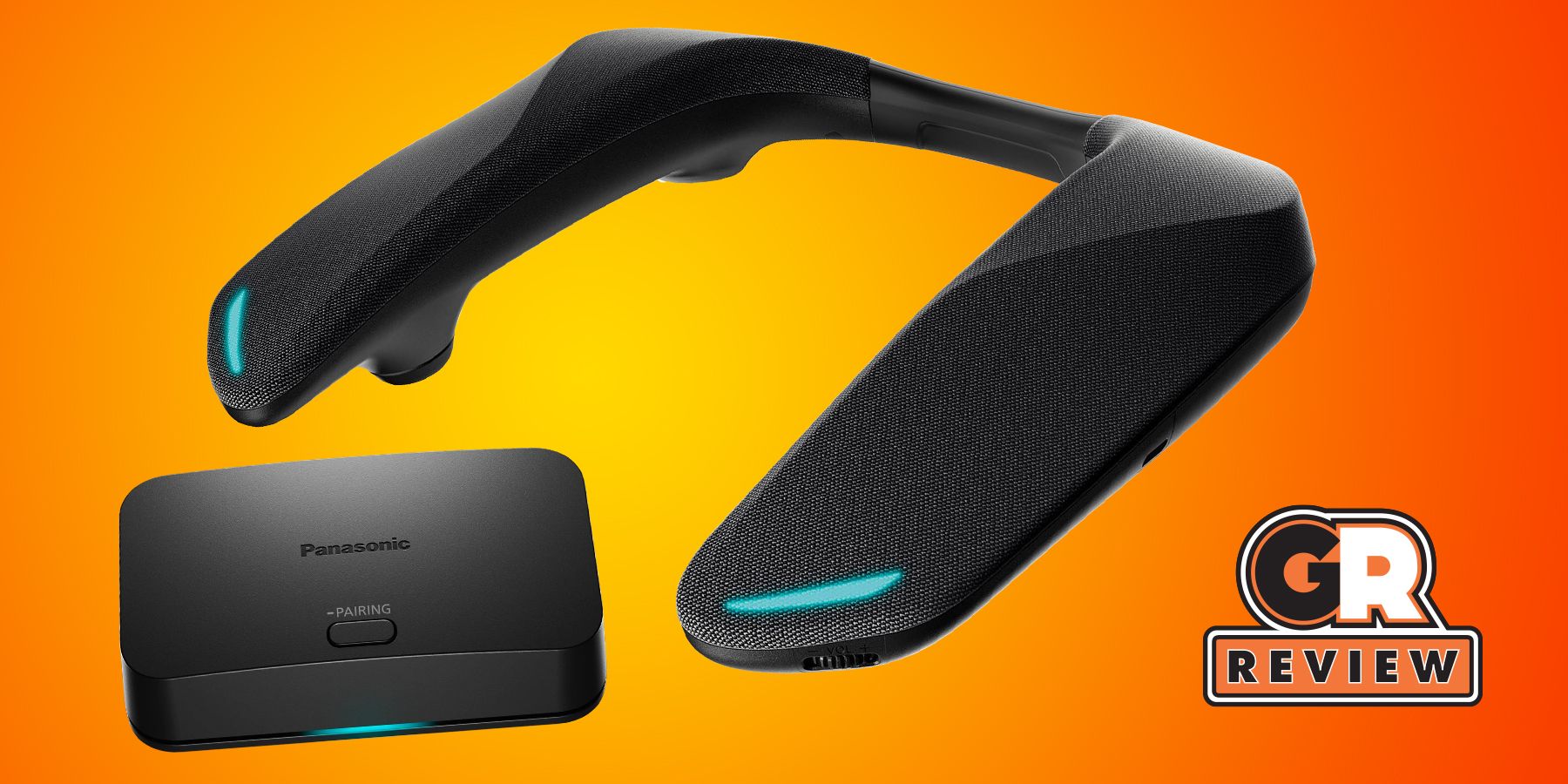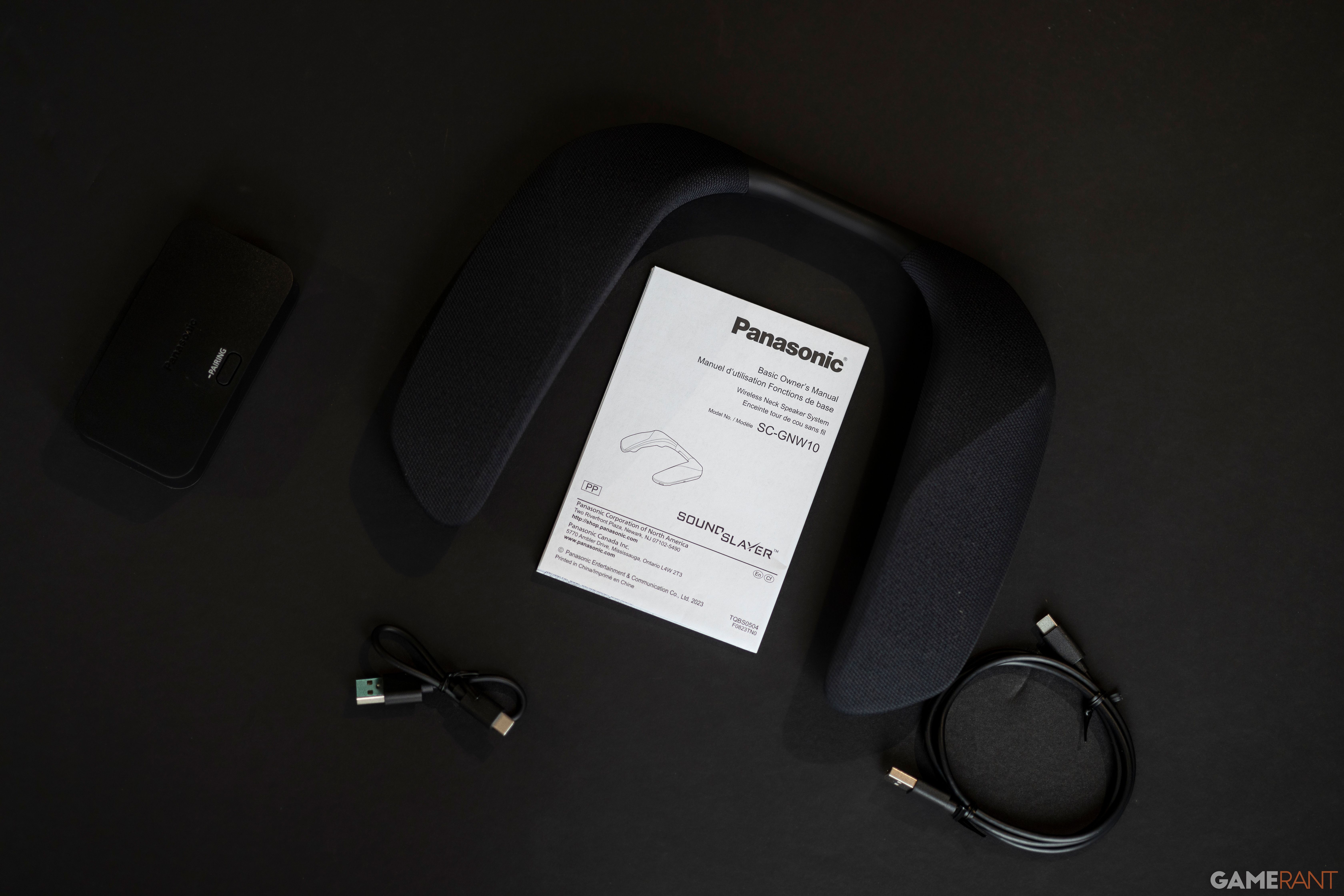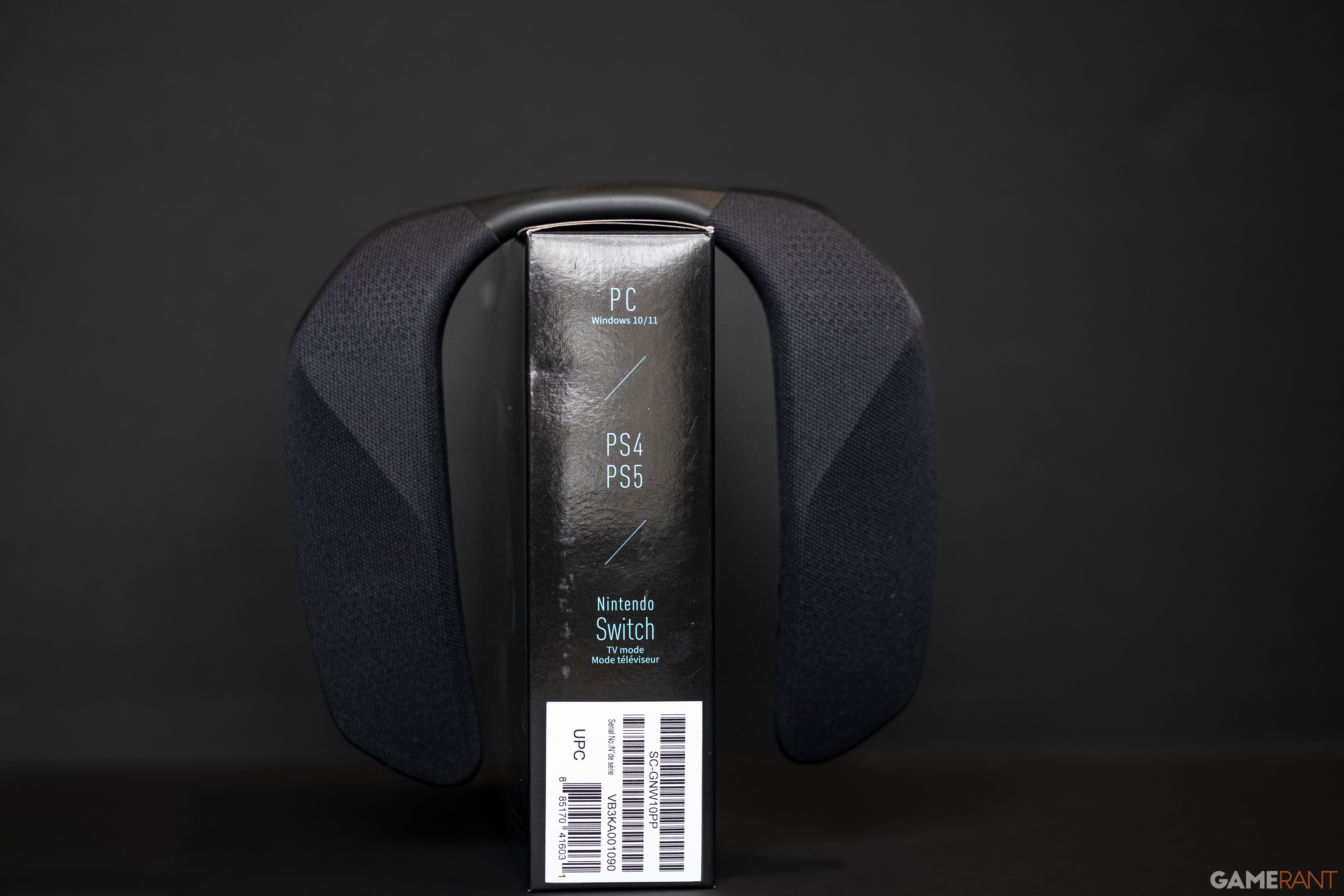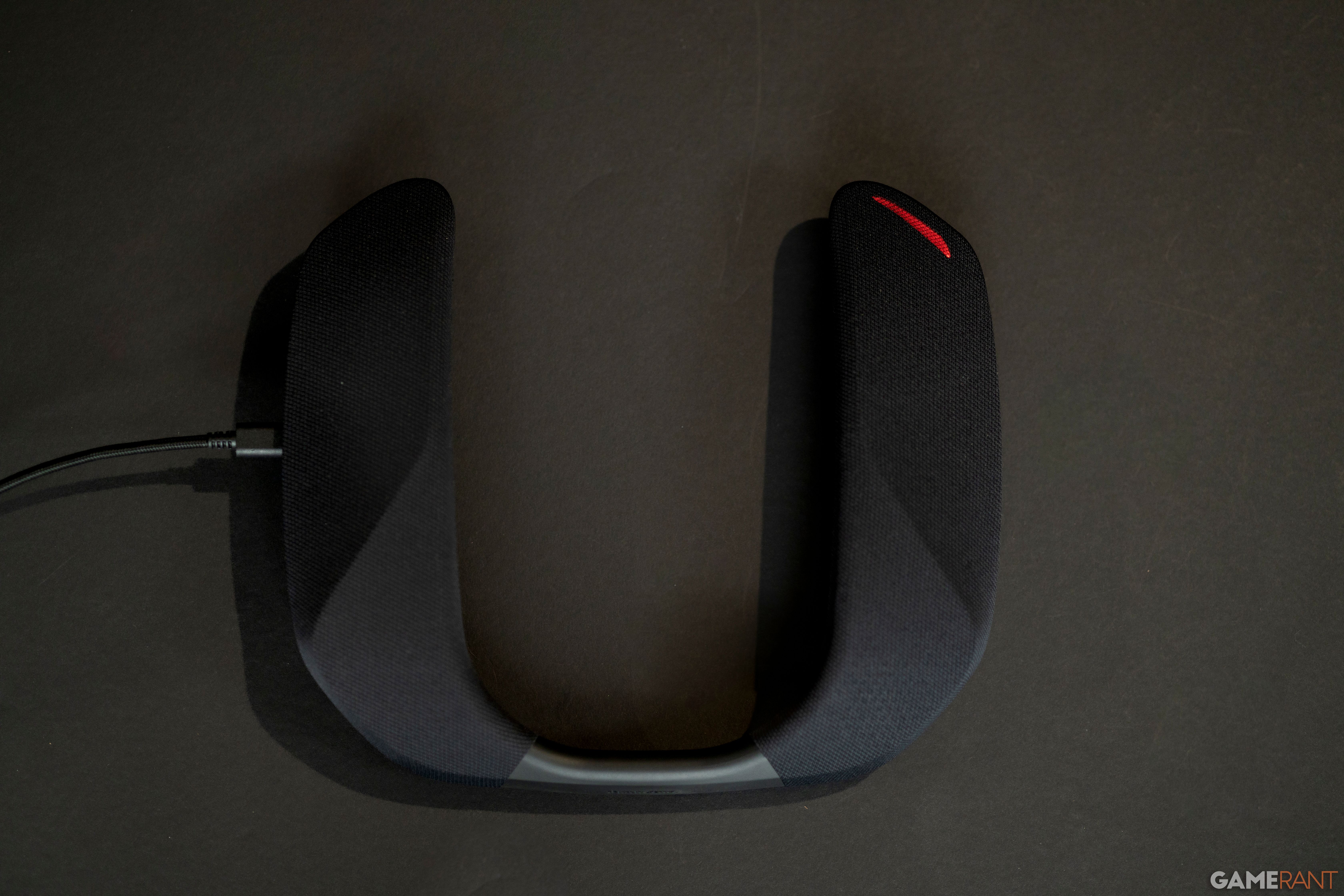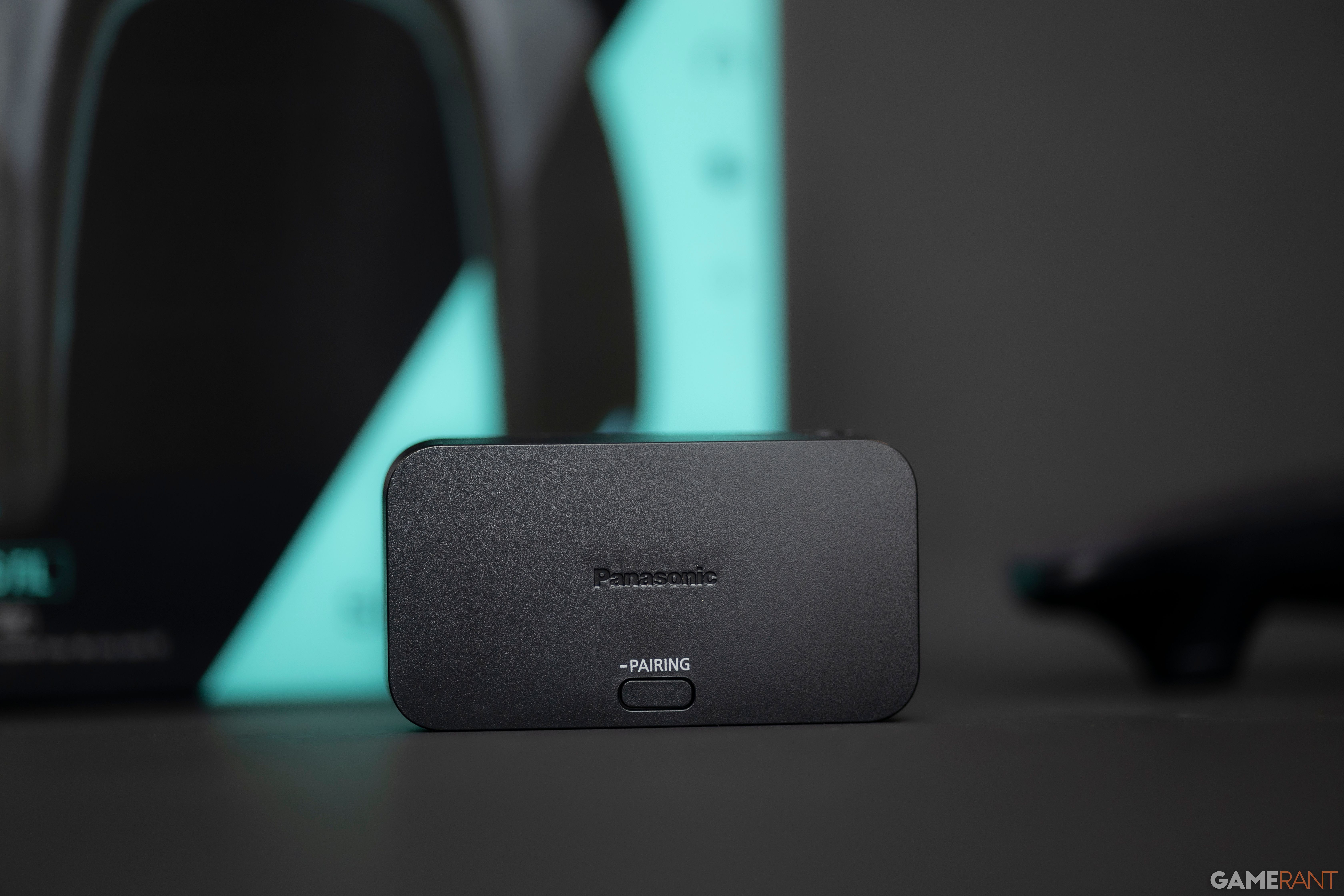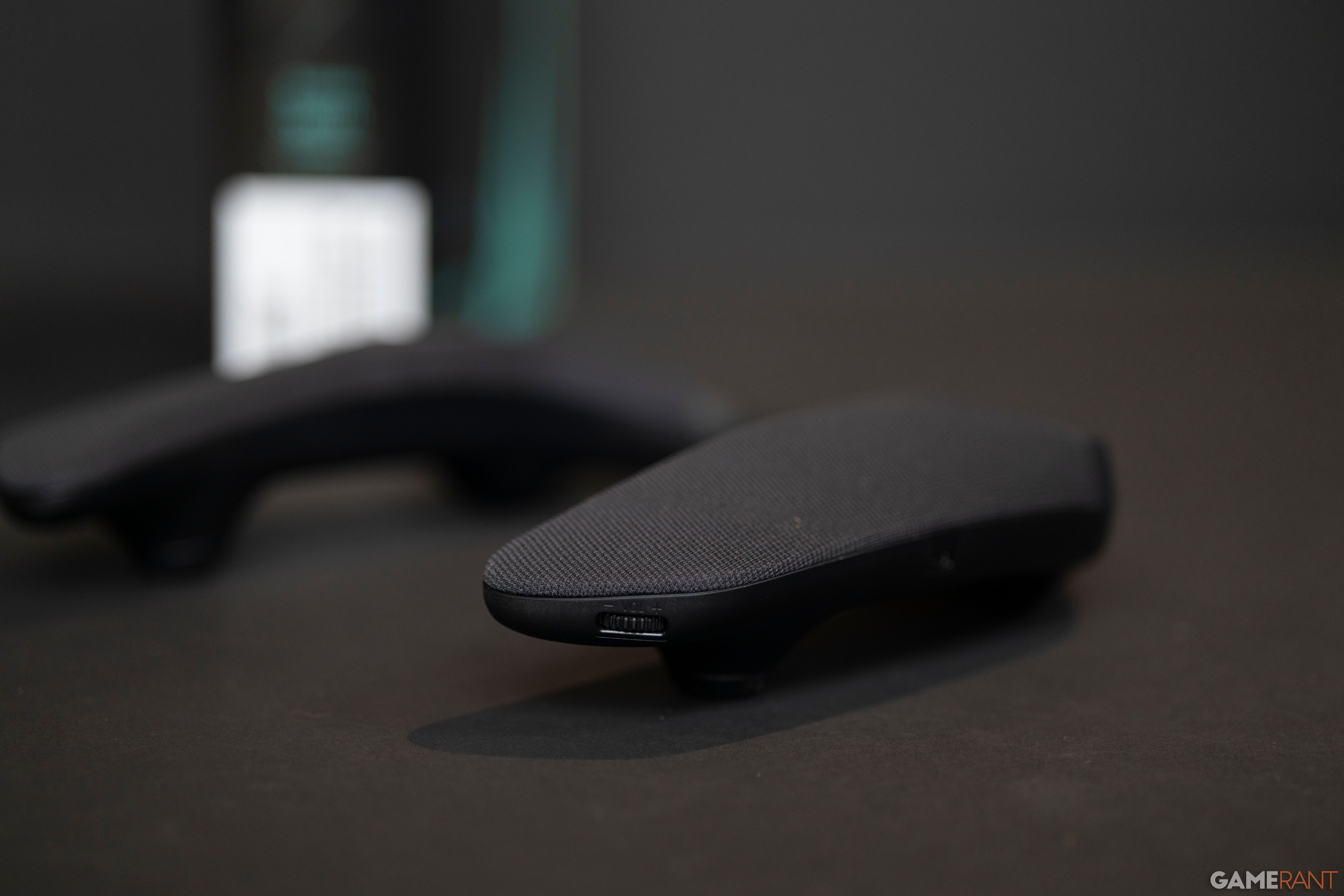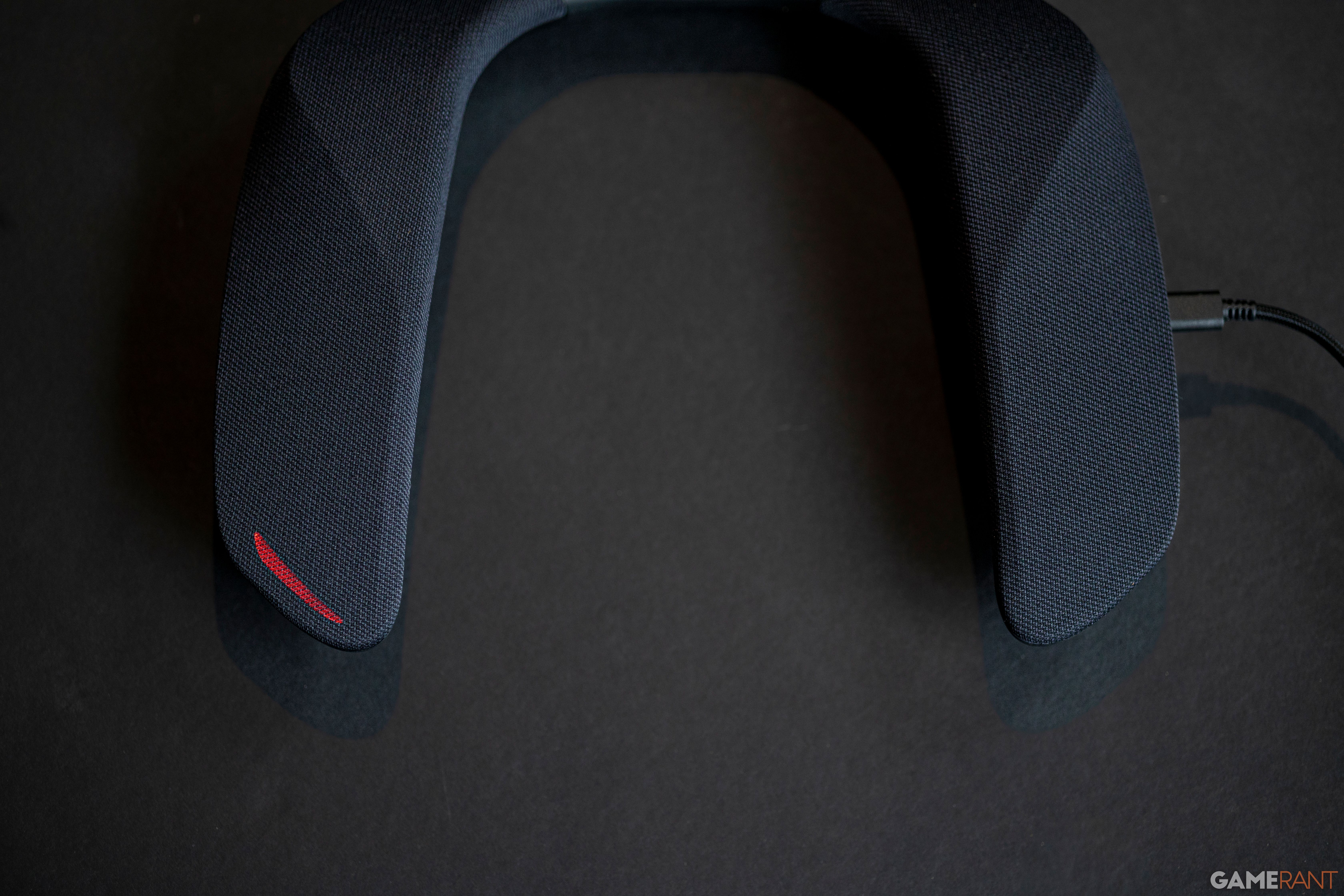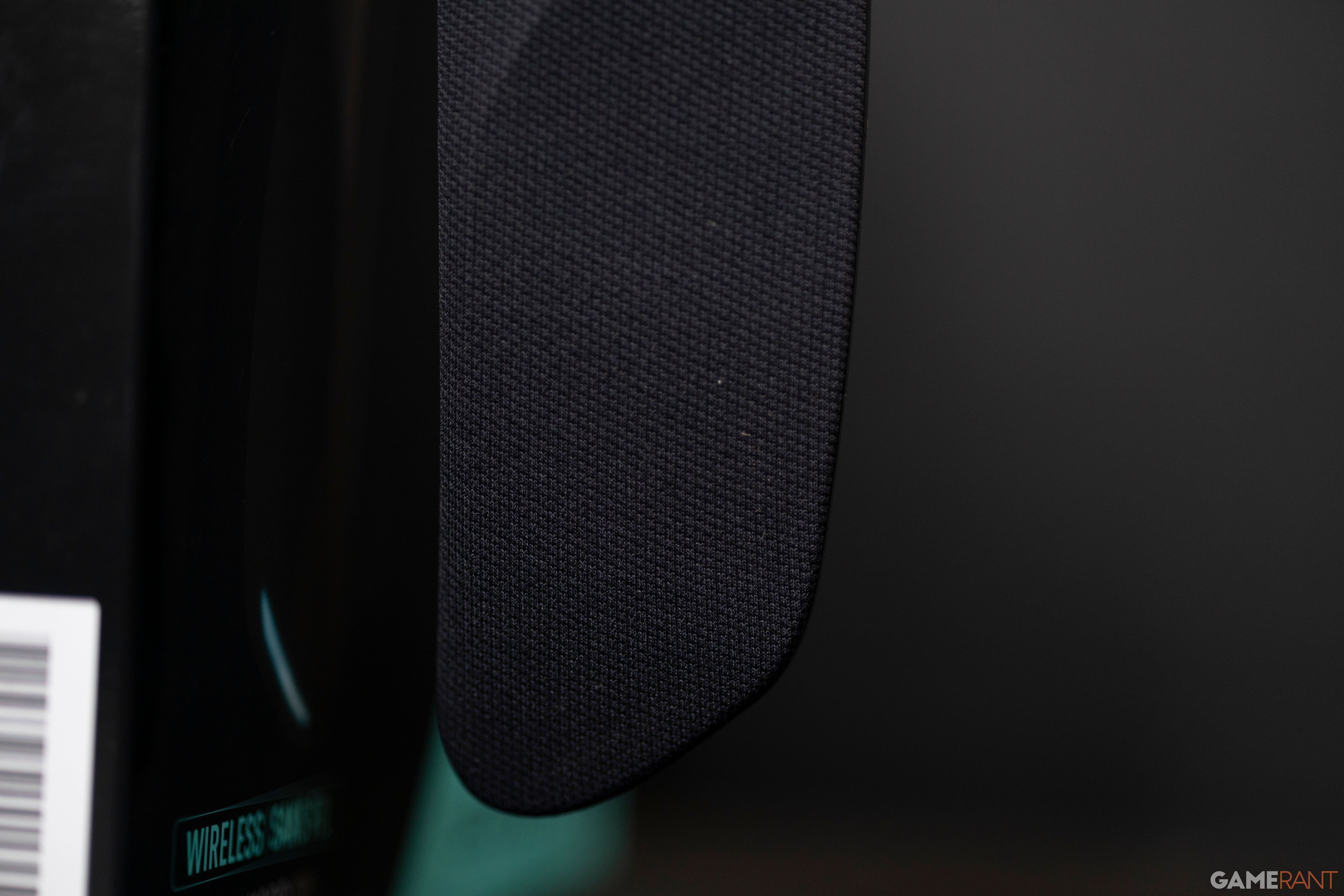Quick Links
-
Related products and competition
-
Closing thoughts: Should you buy the Panasonic SoundSlayer GWN10?
Many gamers have a love-hate relationship with headsets. They’re nice for privacy if you’re playing in a shared space, both in terms of isolating you from distracting outside noises and delivering closer, more realistic audio. If you’re prone to head and ear pain from headsets, though, you’re not alone. Even the products claiming to be the most comfortable gaming headset still carry the risk of creating tension aches in the ear and temple area, especially if you’re a marathon player who puts in multiple-hour sessions.
Fortunately, there are quite a few alternatives. A full-fledged desktop sound system, complete with satellite speakers and soundbar, is one of them — albeit an expensive and obtrusive one. For more of a middle ground, consider something like the Panasonic SoundSlayer GWN10, a wearable gaming speaker that eliminates earphone discomfort.
Price and availability
The SoundSlayer is available through Amazon and Panasonic, as well as B&H Photo and Video, for $300. At the time of this review’s publishing, the speaker is on sale through Amazon.
What’s in the box?
When you unbox the SoundSlayer, you will find, of course, the speaker itself. There’s also its user manual, a wireless transmitter, and two cables: one shorter USB-C to USB-A, and one longer of the same.
The longer cable is meant for connecting the wireless transmitter to your console and the shorter is meant for charging, but they are interchangeable based on your setup.
Design and features
The SoundSlayer GWN10 is designed to rest on the nape of the neck, with the speakers reaching down to about the clavicle. Speaker mesh overlays a sturdy plastic housing, with rubber pads on the underside to provide comfort. There’s one LED indicator light on each end, which glows red for a battery status and blue for a connected status.
On the inside of the left-hand speaker, there’s three buttons: power, function, and mute. On the tail of the left speaker is a volume wheel, and on the outer edge of the left-side speaker is the USB-C charging port. The wireless receiver is plastic, a bit bigger than palm-sized, with a matching blue indicator light.
Connectivity
One of the first things you might’ve noticed is the lack of connectivity ports on this headset. Arguably the biggest downfall to the Soundslayer GWN10 is its sole connectivity option: a 2.4 GHz wireless transmitter. This isn’t the little thumb-drive-sized dongle you’re probably used to using for wireless headsets, gaming mice, and the like.
As pictured above, the transmitter isn’t much smaller than a cellphone. This doesn’t afford the Soundslayer any points for portability. It would’ve been nice to see different connectivity options to maximize convenience in varying situations. For instance, when using the Soundslayer with a handheld console like the Nintendo Switch, having the clunky transmitter dangling off the console isn’t fantastic.
The lack of Bluetooth or 3.5mm wired connection options is one thing contributing to the Soundslayer’s murky use case.
However, Panasonic’s wearable speaker reconciles this middling portability with stellar connectivity via the wireless transmitter. Panasonic says the GWN10 achieves latency speeds of less than 20 milliseconds; any delays at this speed are imperceivable. There was never a concern about lag, stuttering, or latency throughout testing.
Comfort and fit
So comfortable you might forget you’re wearing it
A wearable speaker like the GWN10 offers a pretty universal fit, resting on the lower neck in much the same way despite player height, size, etc.
Why would anyone pick a wearable speaker over a standard gaming headset? The answer is simple: comfort. Even the best gaming headsets, like the Beyerdynamic MMX 330 Pro, can cause tension and discomfort after prolonged periods of wear. Since all the GWN10’s weight rests on your lower neck and clavicles, there’s absolutely no strain on the head, ears, or temples.
Wearingf the Soundslayer for up to four hours at a time during testing, there was no discomfort or soreness whatsoever. Headaches and ear pain after hours of wearing a traditional headset aren’t uncommon for gamers, so if that’s a common struggle for you, the Soundslayer GWN10 would remedy the problem immediately.
One of the main concerns with the GWN10 was the sound being a disturbance to nearby people. In a house with an office/gaming setup open to both the kitchen and living room, and with the GWN10 on about half to three-quarters, people in other rooms could only scarcely hear the personal speaker. If you’re in an open space where there are conversations, music, or TVs making noise, the GWN10’s sound will probably melt into the background.
In particularly quiet spaces, though, or when others are within six feet or so, the speaker’s output will be much easier to hear, and thus there will be a disturbance in certain settings.
If you’re a parent and need to listen for children, or otherwise want to stay more aware of your surroundings than would be possible with the noise isolation of a traditional headset, the GWN10 makes this possible.
Sound and performance
Overall, the sound quality on the Panasonic Soundslayer GWN10 is very good. It doesn’t achieve the deep, rumbling basses you’d get in a more large-scale speaker setup, namely one that includes a soundbar or a subwoofer, but the surround-sound immersion more than makes up for that.
Across a versatile range of game types, including first-person shooters like Call of Duty, storytelling RPGs like Baldurs Gate 3, and a number of chill indie games with few more sound effects than a simple music soundtrack, the Soundslayer delivers excellent positional audio.
Echoing footsteps, distance gunfire, a rapidly-approaching NPC, and an over-the-shoulder whisper all take on a new sense of realism with the GWN10’s unique speaker shape.
Many sound profiles to choose from
The SoundSlayer GWN10 offers several sound modes, tailoring the speaker to a wide variety of uses. A standard stereo mode is a good default choice if you want good all-around sound for watching movies or sports, listening to music, or playing games.
There’s game mode, which prioritizes positional audio for heightened realistic accuracy. Music mode focuses on high-resolution audio, so you don’t miss out on fine instrumental details.
Cinema mode sounds almost identical to gaming mode. Both seem to emphasize surround sound for the best immersion possible.
A quick note on mic and battery
A few more quick hardware notes to round out the GWN10’s performance. The GWN10’s battery capacity and charging efficiency probably won’t impress if you’re used to wireless headsets, but they aren’t really comparable products. At just 9 hours, the battery life isn’t all that competitive with most quality gaming headsets. I wish the speaker had a fast charging boost, as many wireless peripherals now do, but there’s no fast charging in the first hour of plugging the device in. And all in all, it takes the device about four hours to reach a full tank.
The mic quality on this wearable speaker is, in the most simple of terms, good. Clarity and clearness on the receiving end won’t be as impressive as with a dedicated desktop microphone but, like with most gaming headset mics, it’s still enough to casually talk with friends when playing online. It’s no streamer’s mic, though.
One struggle I had with the mic was my hair brushing over the input and causing some loud rustling feedback, so keep that in mind if you have long hair or a beard.
There’s not a lot of competition in the wearable speaker market, as many still consider this sort of thing to be some quirky Sharper-Image-esque gimmick.
If you want to shop around, though, consider the Sony Bravia Theater U. It’s comparatively priced with the GWN10 at $300.
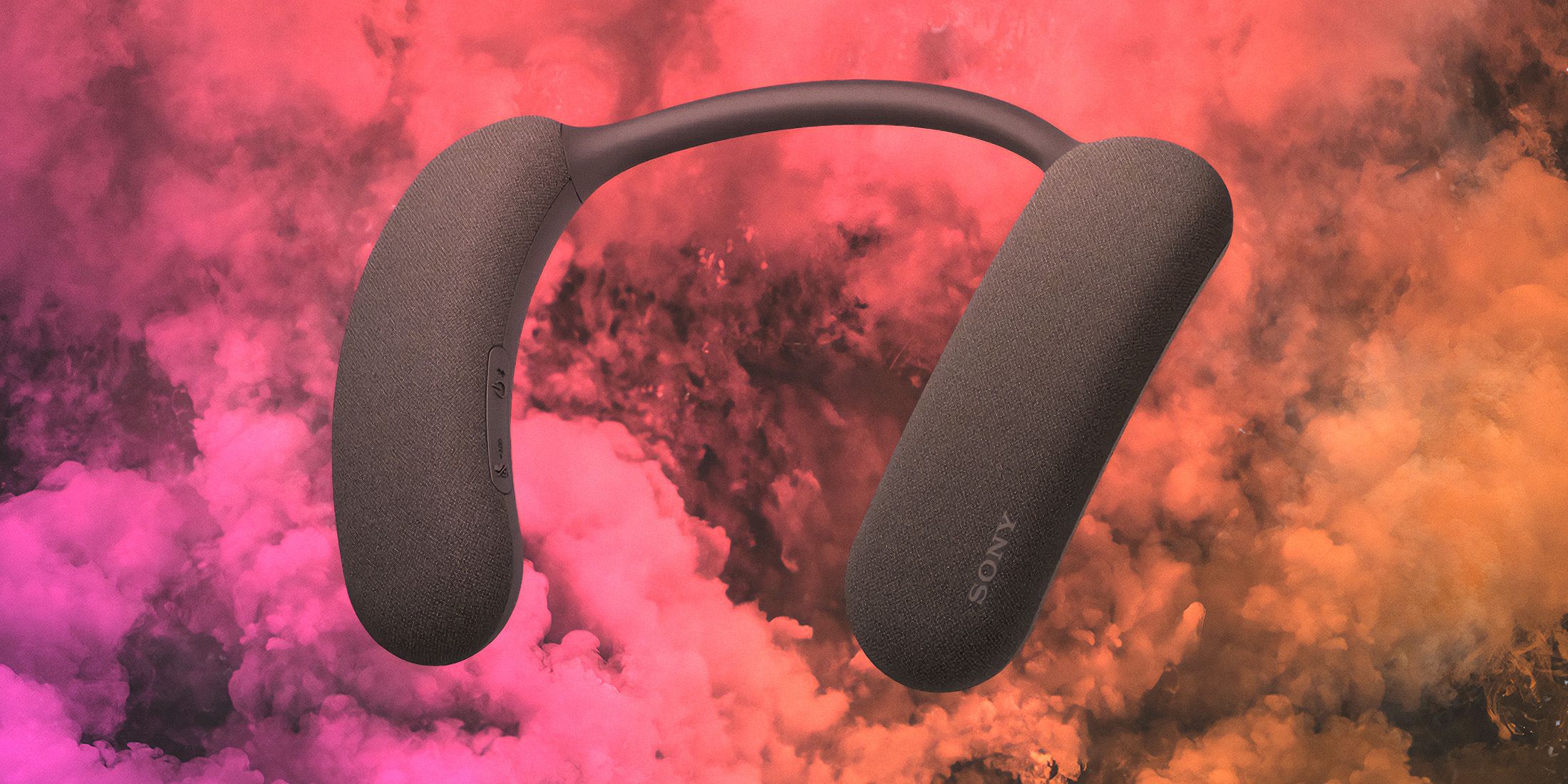
Related
Sony Bravia Theater U Review
The Sony Bravia Theater U is a wearable wireless speaker system that impresses with its sound quality and ease of use.
There’s one major advantage to the Theater U, though: it can connect via Bluetooth or 3.5mm wire, no chunky transmitter necessary.
Closing thoughts: Should you buy the Panasonic SoundSlayer GWN10?
It fits very specific needs
There are two major contentions when considering the Panasonic SoundSlayer GWN10: its narrow use case window, and its limited connectivity options. If you’rere primarily a handheld gamer, like the Switch or the Steam Deck, the bulky wireless transmitter could be too annoying to contend with on a regular basis.
Further, if you’re looking for a personal audio device to frequently use in shared spaces like subway trains or libraries, where others probably wouldn’t appreciate the gaming noise, this isn’t the product for you.
However, PC, PlayStation, or even Nintendo Switch players who exclusively play with their console docked would get a lot of valuable use out of the GWN10, especially if ordinary headsets cause pain, and if full-scale speaker systems are undesired or out of reach.
A few hopes for potential future generations of the GWN10 on our end include notably a foldable design and a smaller dongle (and/or Bluetooth) to make taking the wearable speaker on the go a bit easier. Even without these things, though, the SoundSlayer GWN10 is an excellent personal gaming audio alternative for those who need it.
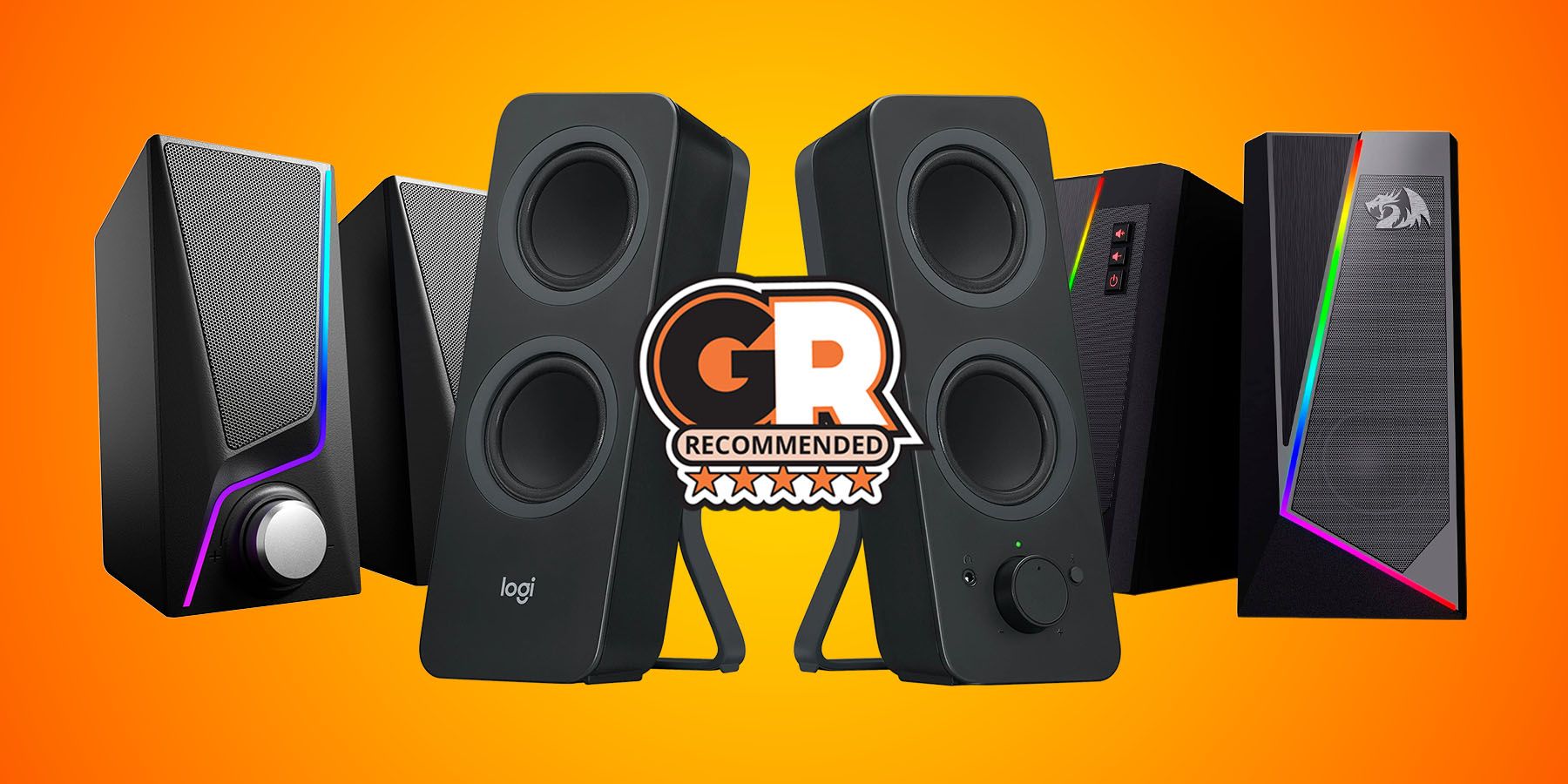
Related
The Best Budget PC Speakers for 2024
When building a PC setup, too often speakers are overlooked components. These budget PC speakers are affordable ways to complete a new rig.


